This Blog has been updated from it original posting to reflect new information and changes in technology regarding the ideal listening volume level. Updated on 12/4/19
Today we’re going to look at average listening room levels. I go into a lot of rooms with dealers and people that have listening systems and the first thing that I notice is that they always play the music too loud for the amount of room treatment that they have in their room.
What this does is it brings the room in to play more and course I’m hearing then more room sound than I’m hearing music and I understand why they do that. They want more of the good things but they need less of the room sound so we have to be really careful about how we do that. Stereophile did a study a few years back and found out that the average listening level in most of the rooms of the audiophiles that they surveyed was around 83 dB SPL. They asked what listening pressure level most of the survey respondents listened to. They were not interested in an ideal listening volume or an average TV listening volume.
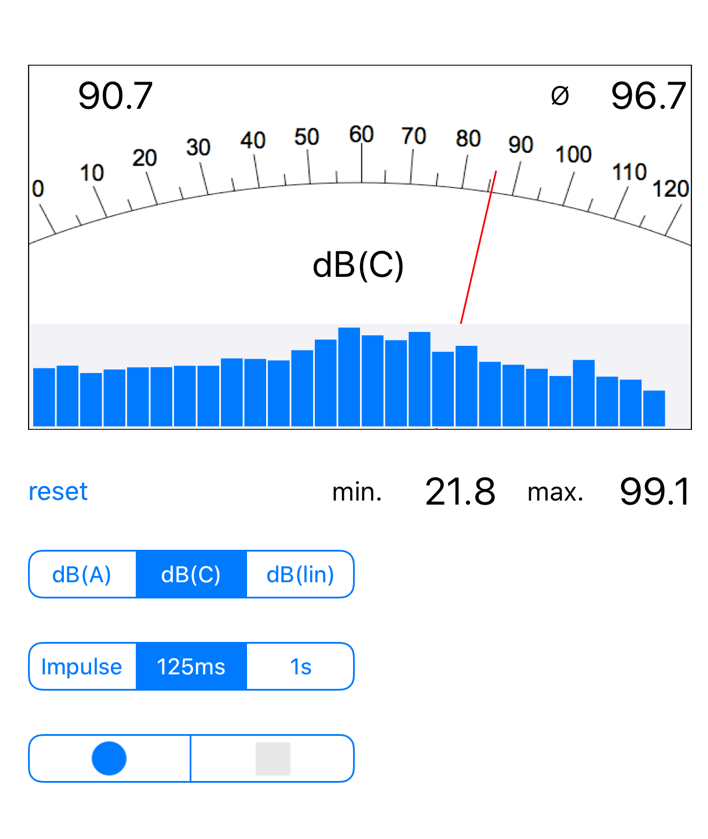
dB Reading
Finding the Average Listening Level
So a quick way to figure out what your average listening level in your room take your phone and get a sound pressure app. There’s plenty of apps available where you can measure the pressure in the room, and just do some samples. Listen to some music and take some readings and find out what your average listening level is and see how it compares to the 83 DB that Stereophile came up with. The big thing here is that the amount of treatment that you have in your room must match the level that you play at and I see this a lot. I see a lot of people that like to play it much higher levels than 83 and when you do that then we aggravate and magnify the low-end issues that are in a room.
Listening Levels: https://www.stereophile.com/content/suitable-and-safe-listening-volume-1
If you use 83-85 as a nice average listing level. Realize that anything over 83 SPL in your room, we have to really focus on the low-end absorption and get that under control. Anything less than 83 and then we can not have so much lower and absorption. But I want you to understand that there’s a correlation between how much energy you put in the room and what happens to the frequency response of the room. There is no such thing as an ideal listening volume or an average TV listening volume or level. Everything depends on the age of the listener, the length and width of the room along with the ceiling height.
Increased Reflections and Reverberation Times
We also increase the reflections and reverberation times. If you don’t have enough middle and high-frequency absorption and diffusion to deal with the reflections you’re just exasperating the whole issue. The more you turn up the gain the more room and less music that you’re getting. So you have to be a little bit careful. We want to keep our eye on the low frequency versus the reflection ratios that we’re gonna have in our room and the following screenshot shows a typical room response curve. We know that our low-end bumps in most rooms and especially in the rooms that I have tested the big issues are 30 to 50 cycles.
Reverberation: https://en.wikipedia.org/wiki/Reverberation
Reverberation Management
To manage reverberation times, we need to treat the surfaces that are causing the problem. The room boundary surfaces are the cause of our high reverberation times and the cause must be treated. We cover those surfaces with sound-absorbing material. The most cost-effective treatment is open-celled foam. You must cover at least 60 – 70% of the surface area to reduce the impact on the Rt-60 times.
Foam Ladder: https://acousticfields.com/product/foam-ladder/
In Summary
So I hope that helps you. If you have any questions at any time I am always on hand to help answer them. Leave them in the comments section or email me at info@acousticfields.com. If you would like to learn more about room acoustics please sign up for my free videos and ebook by joining the mailing list here. I send room tuning tips and things for you to test in your room every Wednesday. They are easy to follow and really help you enjoy more of your music. And if you would like your room acoustic issues analysed for free by me then please fill in the form here and I will be happy to take a look for you.
Thanks and speak soon
Dennis


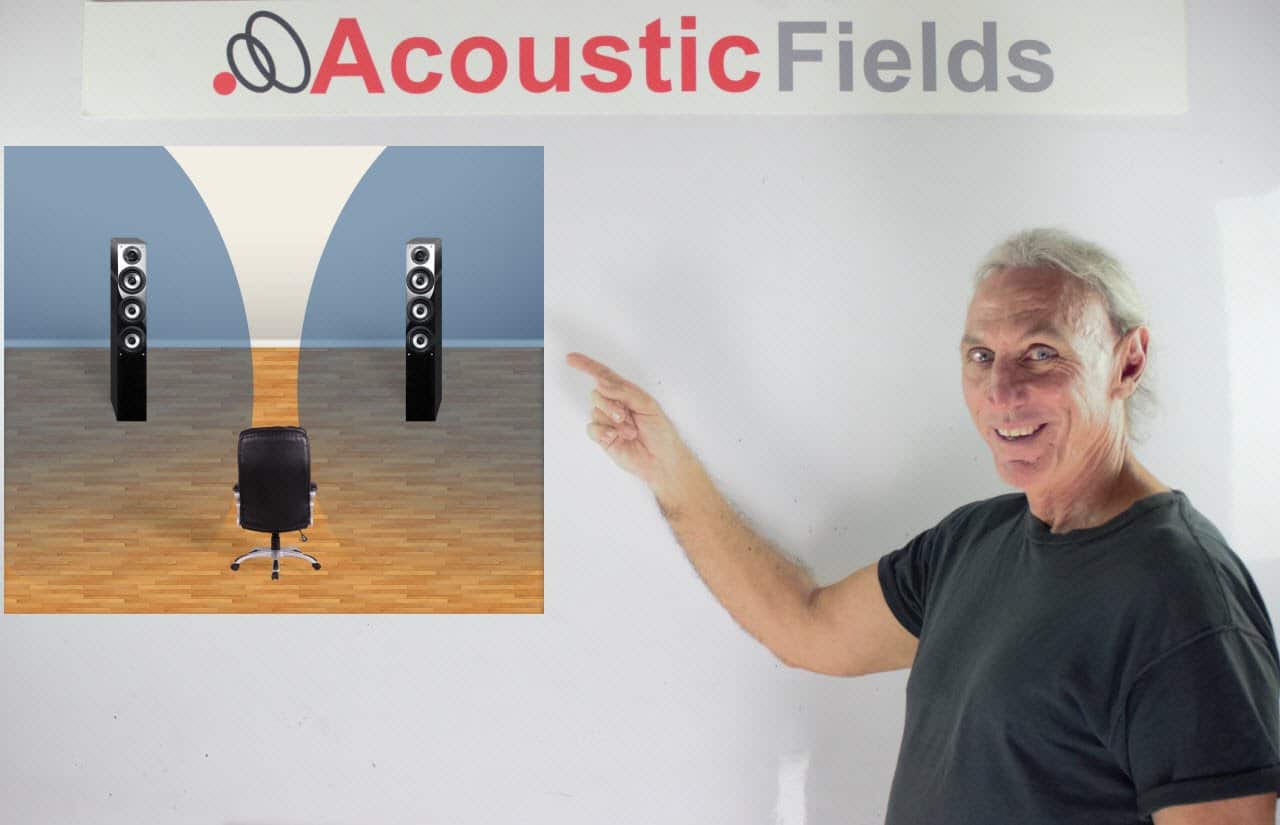

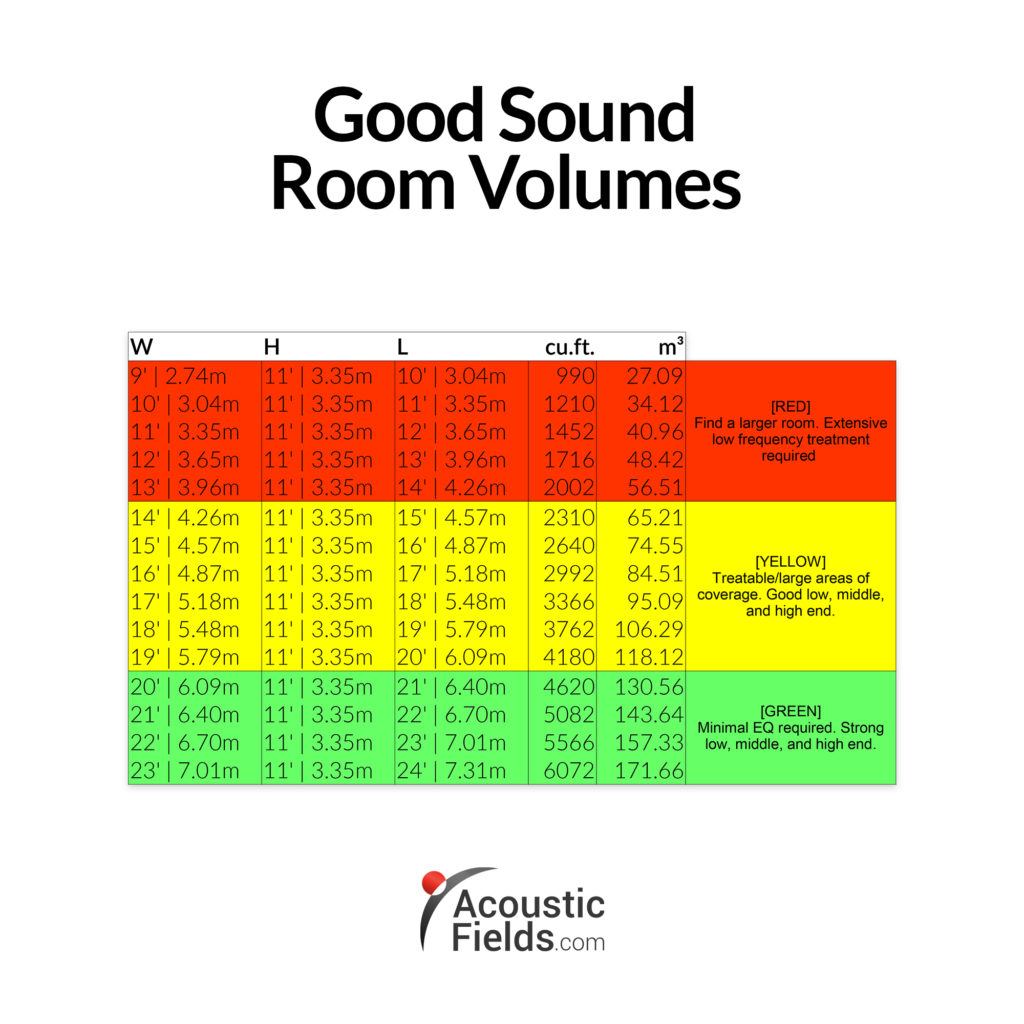

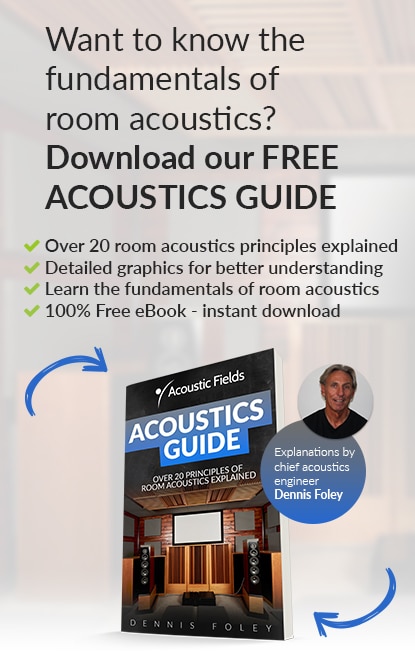


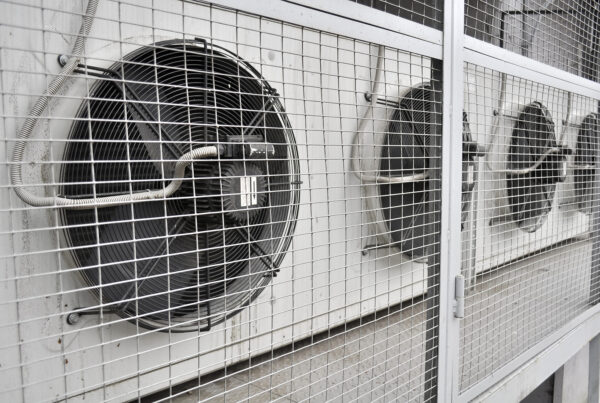
If you know the frequency and amplitude of the reflection, you have a better chance of identifying sources.
Can the quality of a sound reflection identify the reflection source?
Use whatever floor type suits your usage. Carpet should have a carpet pad under the carpet. Hardwood floors should have…
Hello. This article mentions choosing a sound absorbing carpet and a pad. Could you please give examples of products? I…